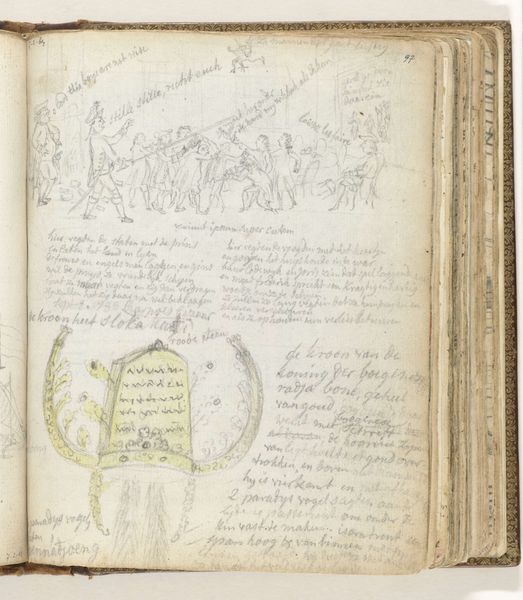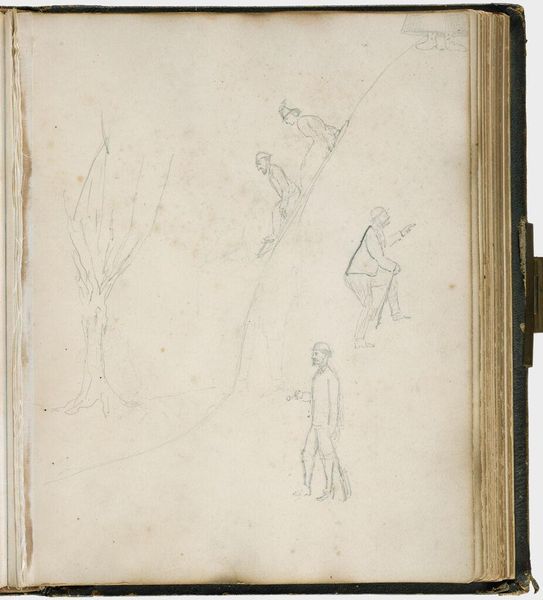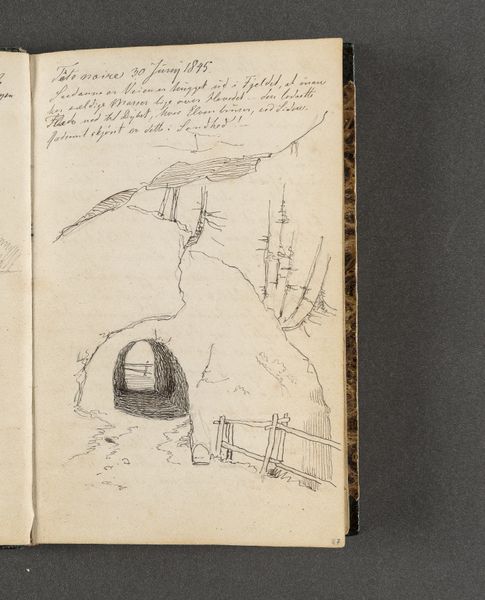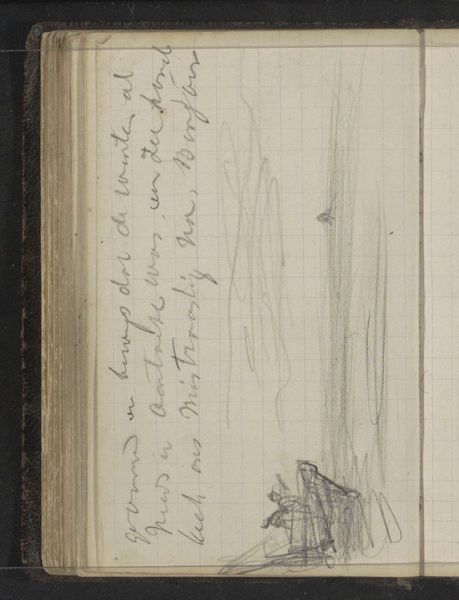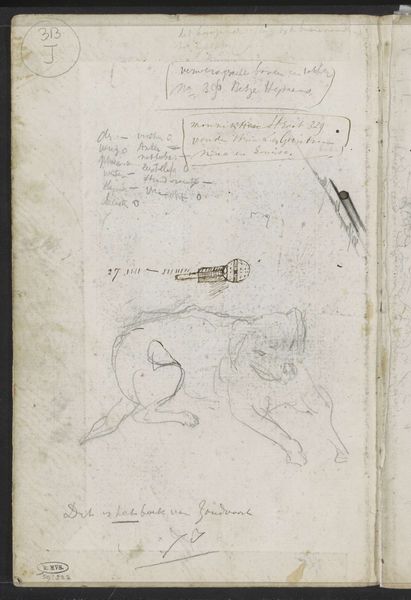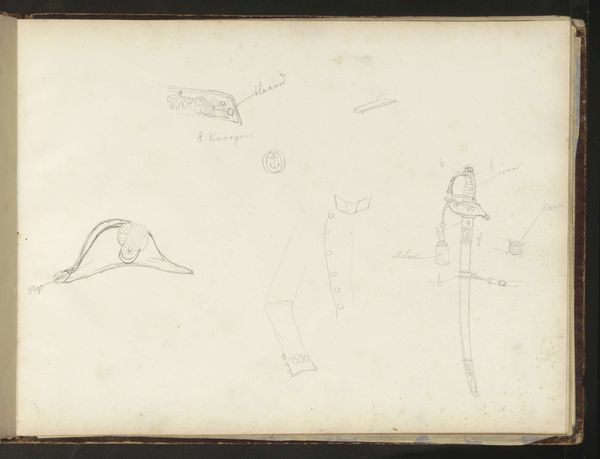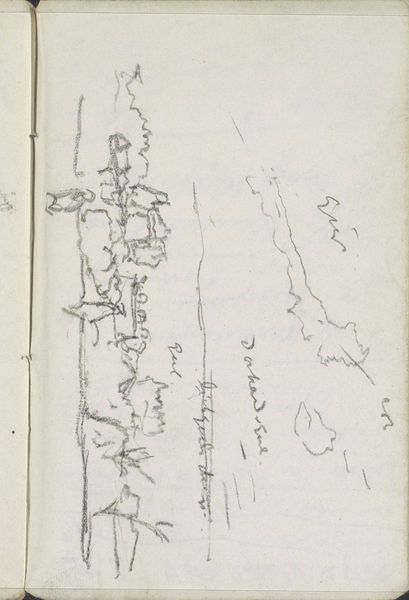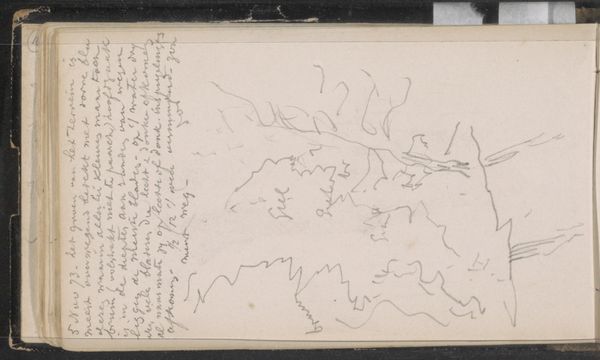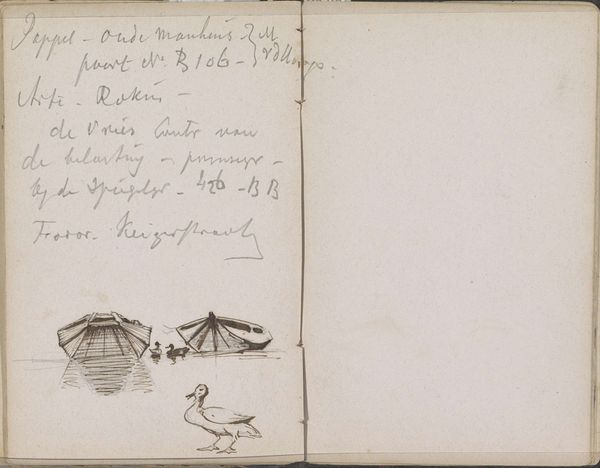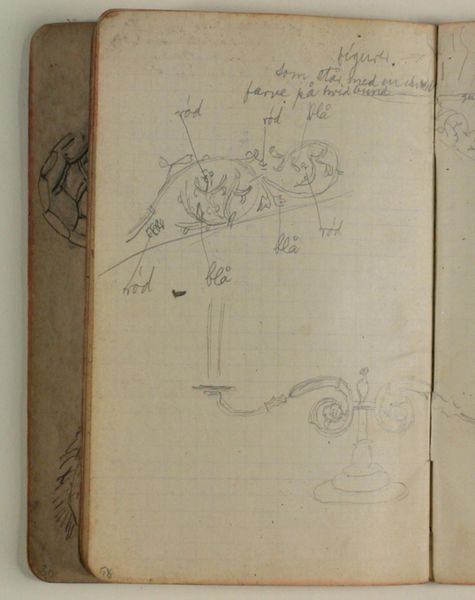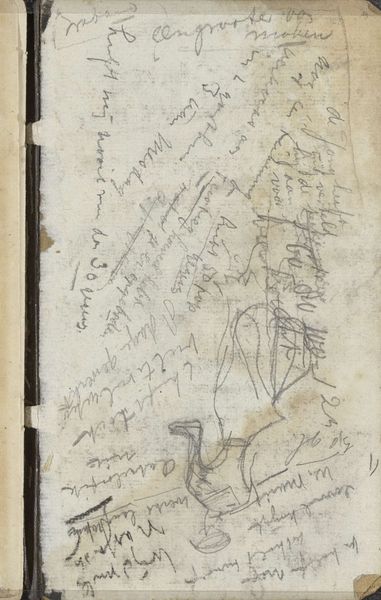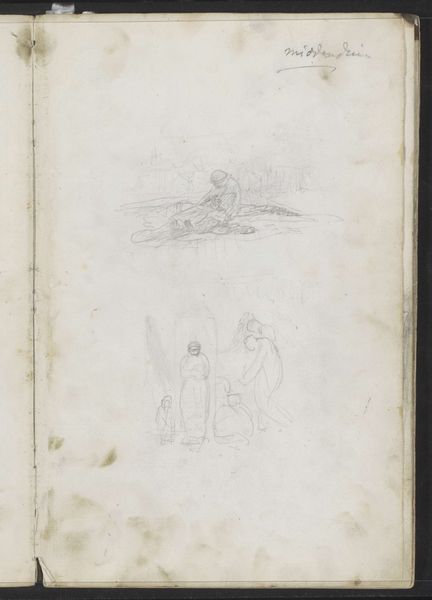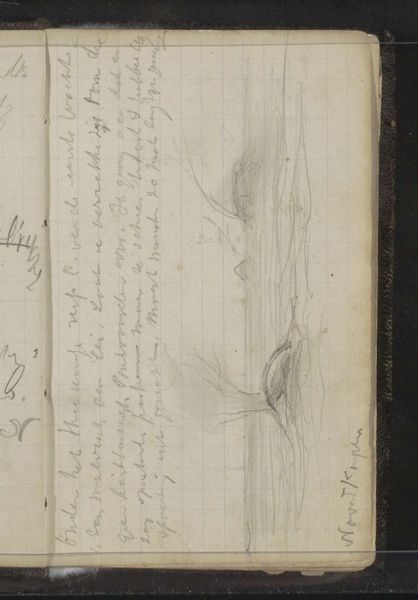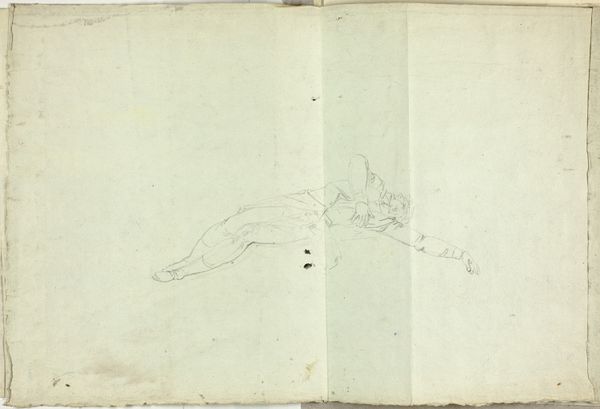
Dimensions: height 195 mm, width 155 mm
Copyright: Rijks Museum: Open Domain
This sketch of a waterspout was made by Jan Brandes in 1778. The waterspout, a powerful natural phenomenon, stretches from the sea to the sky like an inverted tree, a sort of cosmic umbilical cord. This motif of the ascending column—a link between earth and sky—echoes through history, from ancient Egyptian obelisks to the pillars in Renaissance art. Consider the Tower of Babel, an ambitious, phallic structure reaching for the divine, or the World Tree in Norse mythology. The waterspout carries a similar potent symbolism: a conduit for energy, a reaching for higher understanding. The artist here captures the psychological impact of such a sight; the sublime terror and awe induced by nature's raw power. It's a visceral reaction, one that transcends time. The spiraling form engages our subconscious, stirring primal fears and a fascination with the immensity of the cosmos. This image reminds us that these symbols never truly disappear; they are constantly reworked and reinterpreted.
Comments
No comments
Be the first to comment and join the conversation on the ultimate creative platform.
